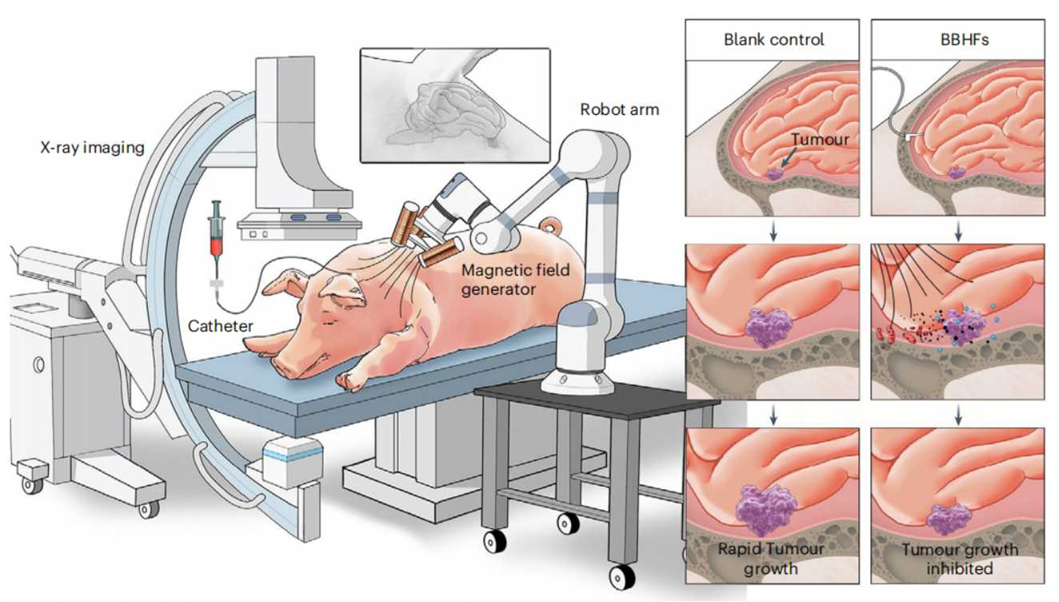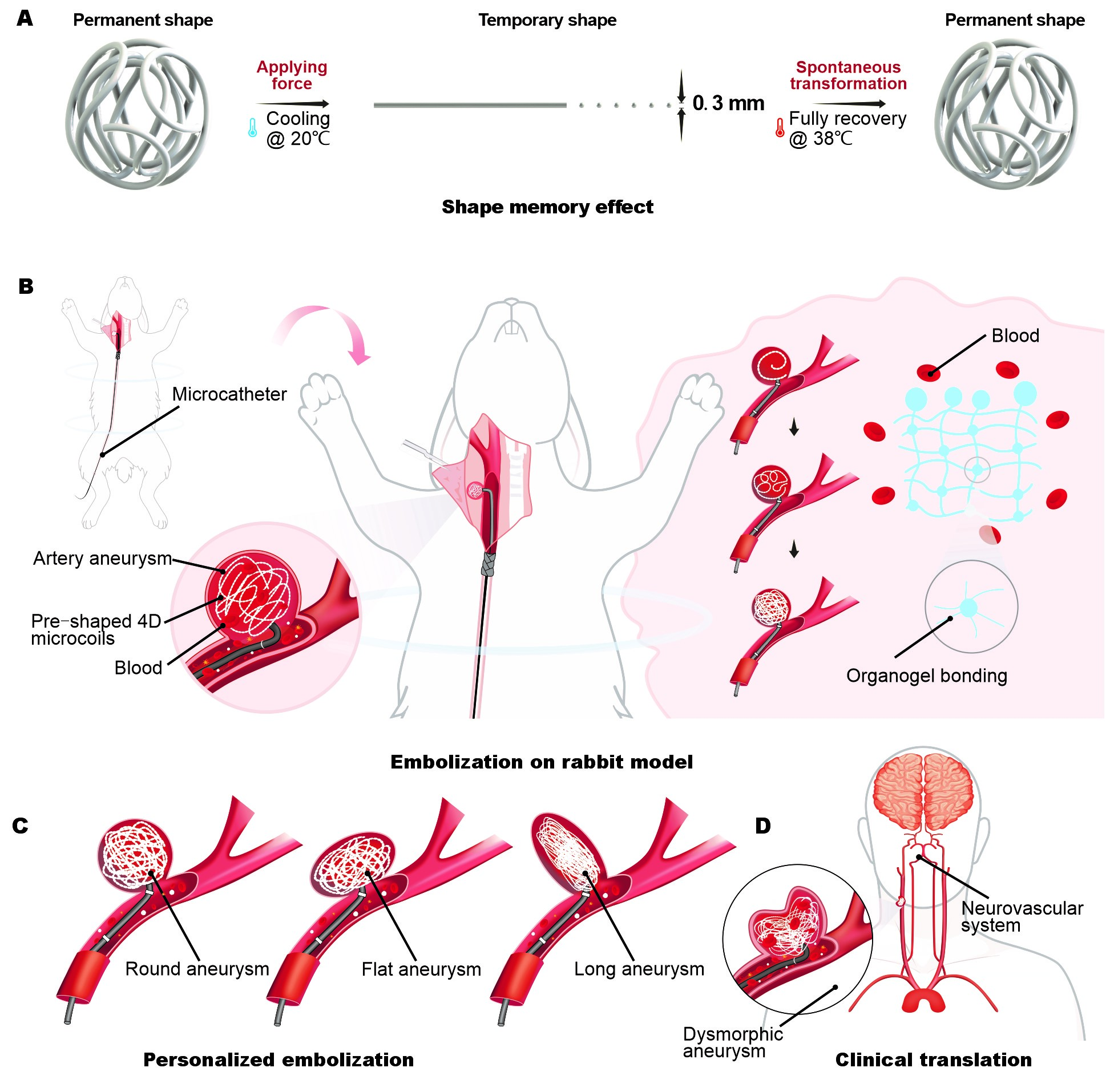
A Magnetically-Driven Innovative Solution for Personalized Intracranial Tumor Therapy
Brain tumors remain among the most challenging conditions in modern medicine. Due to their complexity and location, many are difficult to access, even with the most advanced surgical and therapeutic approaches. Although significant progress has been made in radiotherapy, chemotherapy, and surgical techniques, certain tumors—especially those near critical brain structures—still present considerable risks that are hard to overcome.
Recently, a research team led by Prof. XU Tiantian from the Shenzhen Institutes of Advanced Technology (SIAT) of the Chinese Academy of Sciences, along with collaborators, has developed magnetically driven biohybrid blood hydrogel fibers (BBHFs) capable of delivering chemotherapy directly to brain tumors while effectively evading the body's immune defenses. BBHFs promise a minimally invasive, highly controlled alternative.
The study was published in Nature Biomedical Engineering on May 1.
Inspiration by the morphology and kinematic characteristics of the natural nematode, such as Caenorhabditis elegans, the BBHF (diameter is 1 mm) was developed by in situ gelationare, combining magnetic particles with the patient's own blood, followed by magnetization for orientation. These BBHFs exhibit the exceptional capability to evade immune cell recognition during intracranial delivery while also offering real-time tracking capabilities through X-ray fluoroscopic imaging.
"The BBHFs exhibit notable characteristics of elasticity and softness, enabling them to navigate intricate environments with adaptability. It has an elastic modulus of about 100 kPa—softer than the gut, but stronger and more durable than cartilage, underscoring the exceptional softness of the BBHFs," said Prof. XU.
Importantly, she pointed out that the BBHFs can traverse narrow passageways, even those with diameters smaller than their own.
By mimicking the slender morphology and adaptive undulatory movement mechanism of nematodes, the researchers achieved precise control of BBHF using an externally programmable magnetic field, enabling it to perform various biomimetic motion patterns such as swaying, crawling, and rolling.
Experiment results showed that the BBHF was able to move through the porcine cerebral cortex with gullies and arrive at the target location without leaving scratches on the soft surface.
The integration of a magnetic field unit with X-ray fluoroscopic imaging enables precise and real-time tracking of the BBHFs during targeted intracranial delivery, specifically directed towards tumour sites within the skull. Upon reaching their target, these BBHFs can undergo rapid splitting triggered by a high-strength magnetic field, facilitating the efficient release of therapeutic agents for effective brain tumour inhibition.
In laboratory tests, the team encapsulated doxorubicin—a first-line chemotherapy—into BBHFs and used a high-strength magnetic field to trigger targeted drug release at tumor sites. The fibers remained stable until actuation, ensuring precise delivery with minimal off-target effects. Further trials in pig models showed that BBHFs can navigate through cerebrospinal fluid and deliver drugs effectively within the brain.
Furthermore, comprehensive toxicity assessments indicated that the magnetic particles in BBHFs did not accumulate in vital organs such as the heart, liver, spleen, lungs and kidneys, highlighting the long-term safety of the system. Histological analysis confirmed robust tumor inhibition by BBHFs without triggering significant immune responses or tissue damage, demonstrating their therapeutic efficacy.
BBHFs represent a significant step forward in the development of personalized, minimally invasive neurosurgical techniques. By combining patient-derived materials with soft-robotic design and magnetic guidance, this innovative approach holds promise for transforming the treatments of hard-to-reach brain tumors and other central nervous system disorders.

Fig. 1: Schematic showing the intracranial delivery of the BBHFs under the combined system of magnetic actuation unit and fluoroscopy. (Image by SIAT)

Fig. 2: The BBHFs moving over in vitro porcine cerebral cortex. (Image by SIAT)
File Download:

